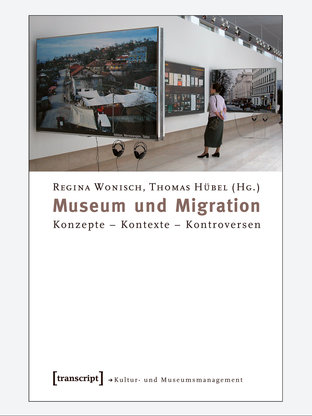From the Periphery to the Center
Why does the issue of "migration" belong in a museum?
Regina Wonisch: Because immigrants are a very important part of our society. And when a museum fully understands itself as an institution that addresses societal questions, then migration is a very important component of our history – and therefore of the museum's content, as well.
As a theme, has migration been traditionally handled differently in Germany than in other countries?
Wonisch: In Germany, France and the Anglo-American countries it was approached very differently. In Germany, the topic surfaced via a wide range of organizations dealing with various aspects of immigration. These organizations wanted to bring their own particular history of immigration to the fore – from Turkey to Germany, for example. It's also very striking that one can currently find an exhibition on migration in almost every German city. The topic has gone from the periphery to the center. Smaller museums have picked up on it and it's also one of the themes at the German Historical Museum in Berlin and in the Haus der Geschichte (House of History) in Bonn.

It's completely different in countries like the US, Canada or Australia. Because there, immigration is a part of their national story. It's touched upon in the anthems of those countries. But there it's really focused on just one kind of immigration, from Europe to the US.
The French have also opened up their own museum on migration. If you're comparing France to Germany, then that museum probably has something to do with the strong centralism of France, with the country's center clearly in the capital of Paris. They had some initiatives from a grass roots level, of course, but then the government really picked up on things at the top. The Cité Nationale de l'Histoire de l'Immigration (National Center for the History of Immigration in France) was founded in 2007.
How have museums in Germany approached the topic?
Wonisch: Migration organizations naturally place a large emphasis on the 1960s – the classic work/migration story. In museum exhibits, though, they often portray a very wide and early development of migration in different contexts – to make it clear that there have always been migratory movements and immigration in Germany. That's a good thing, since it shows that migration is nothing extraordinary. That said, when one makes migration out to be a general human phenomenon, it takes the focus off the present, which is what immigrants are actually confronted with.
Today, there's something of an upswing in exhibitions on immigration in Germany. Is everything going well, then, as far as cultural politics are concerned?
Wonisch: I don't believe so. It's good that migration is becoming a topic, but it also depends on how it's dealt with. If immigration history once again becomes the story of the "other", new forms of discrimination will take place. But there are also initiatives, such as Stuttgart's city museum, where they say that "Immigration is an integral part of our city's history and therefore belongs here."
On November 23, 2012, the Jewish Museum in Berlin started the project, "Be Berlin – be diverse." The idea is to appeal to young people with migratory backgrounds. How new is this approach in Germany?

Wonisch: We always try to address other groups of visitors, to address the broader public. Immigrant groups are a part of that. That also has to do with the fact that globalization has radically changed the composition of city populations. It's incumbent upon the museums to take that into account. The problem is that the institution of the museum emerged in the 19th century and, up to today, has strongly reflected national histories. Globalization is dissolving that to some extent. The museum as an institution has to redefine itself and react to such change.
Is there a new approach to the topic of "migration and museums" that has not yet been implemented?
Wonisch: I believe that we have to question categories such as ethnicity much more strongly. Just like what happened with women's history and the category of gender. Such categories are constructions, and that's something that should become a theme in its own right. As soon as one tries to place human beings into groups and to define them, one first accomplishes something else – namely, to codify those people in yet another way. That's why special exhibitions about migration are only an intermediate step – making the "categories" topic visible and bringing it into museums. But it shouldn't be allowed to stay that way.
Migration as a theme has to be incorporated into long-term exhibitions. In Germany there's actually a migration museum in Bremerhaven that looks at immigration and emigration to and from Germany. But that's a specialized museum. The question is, will migration as a theme anchor itself over the long term in the German Historical Museum or the Haus der Geschichte as an integral part of German history?
Interview: Klaudia Prevezanos
© Deutsche Welle 2012
Qantara.de editor: Lewis Gropp
Regina Wonisch is a historian at the Austrian University of Klagenfurt in Vienna. Her areas of expertise are in museology, minorities and migration research. Together with Thomas Hübel, she published "Museum und Migration: Konzepte - Kontexte - Kontroverse" in September 2012.
